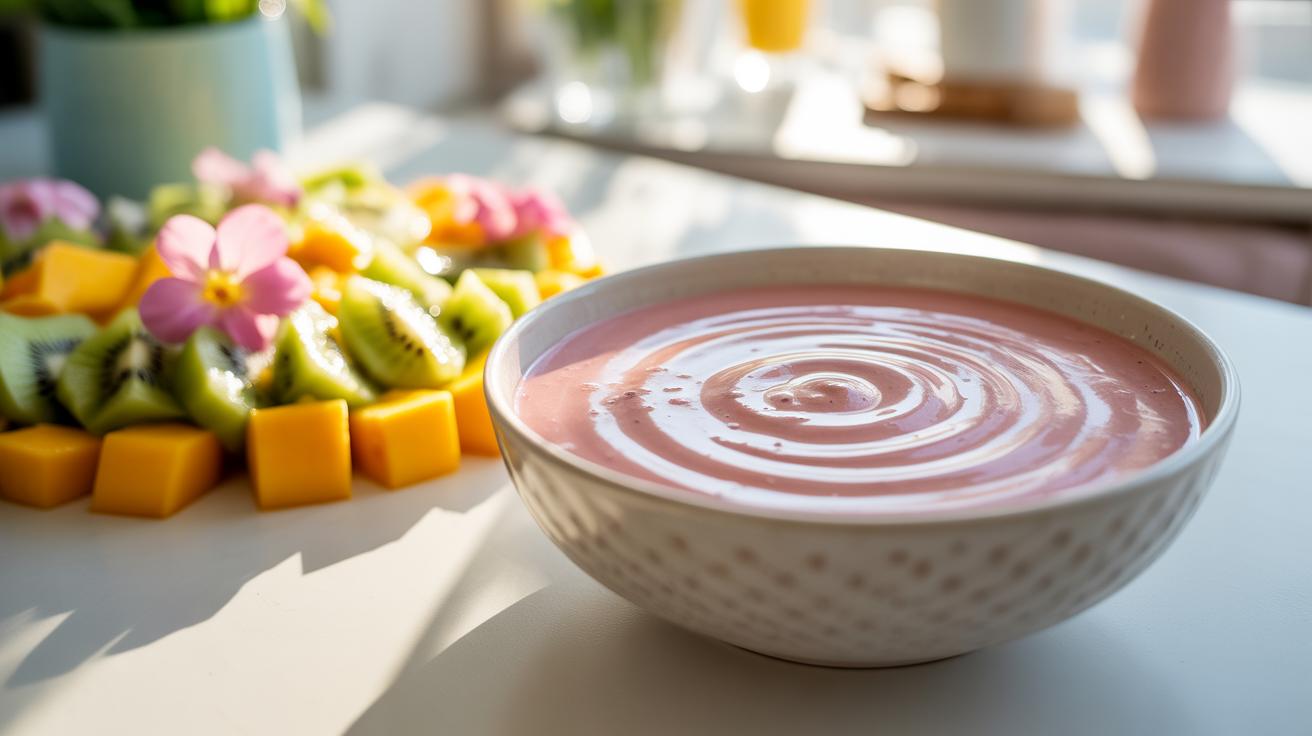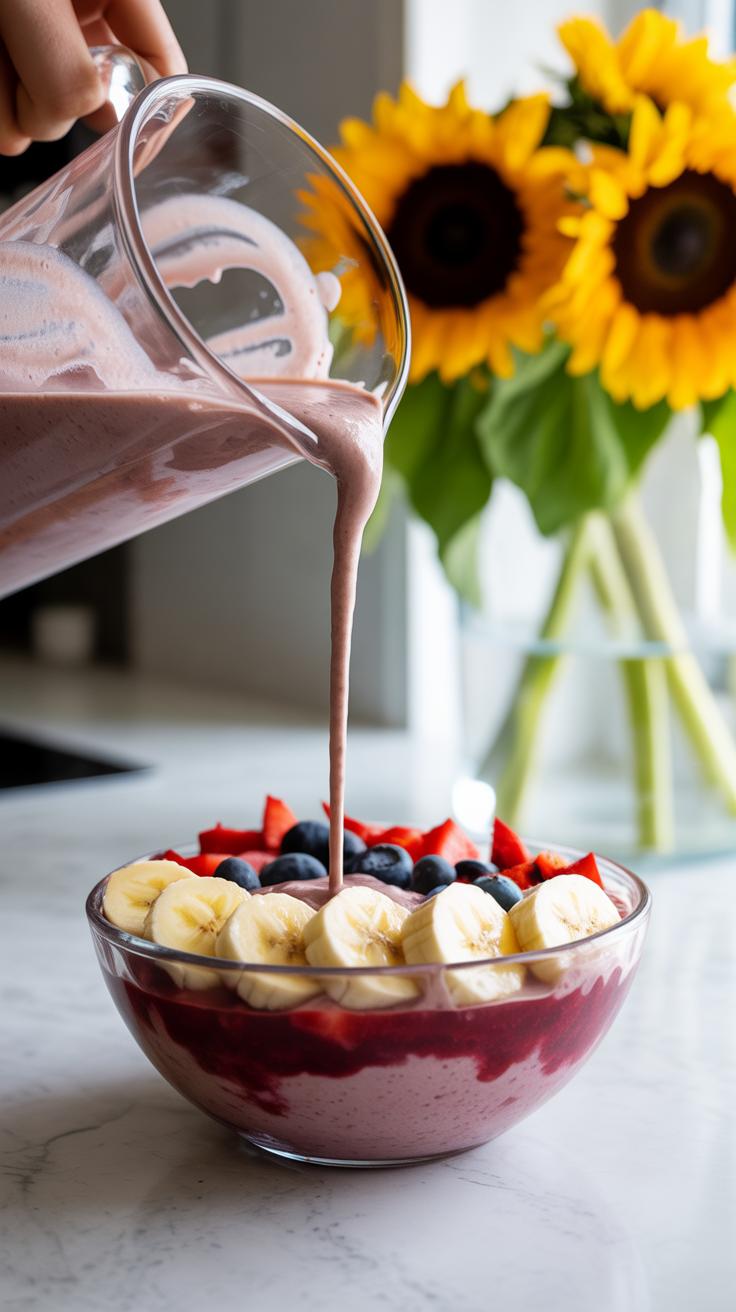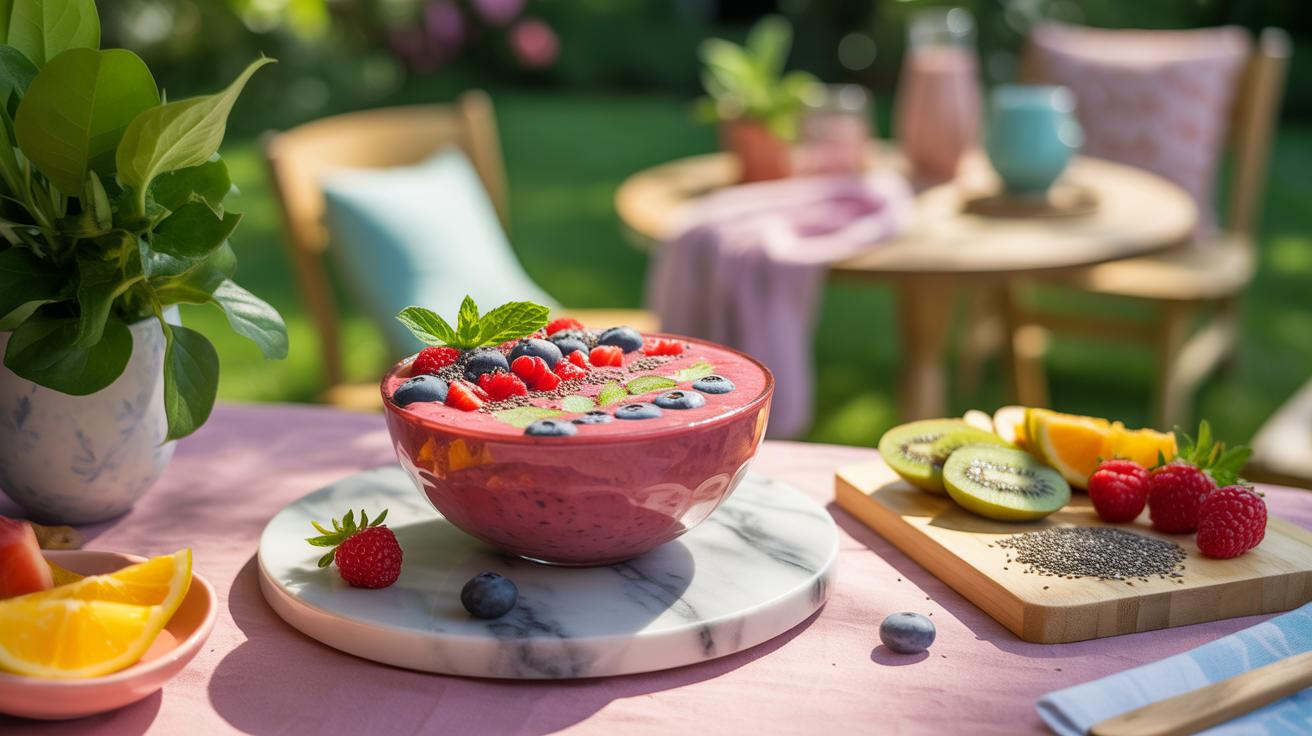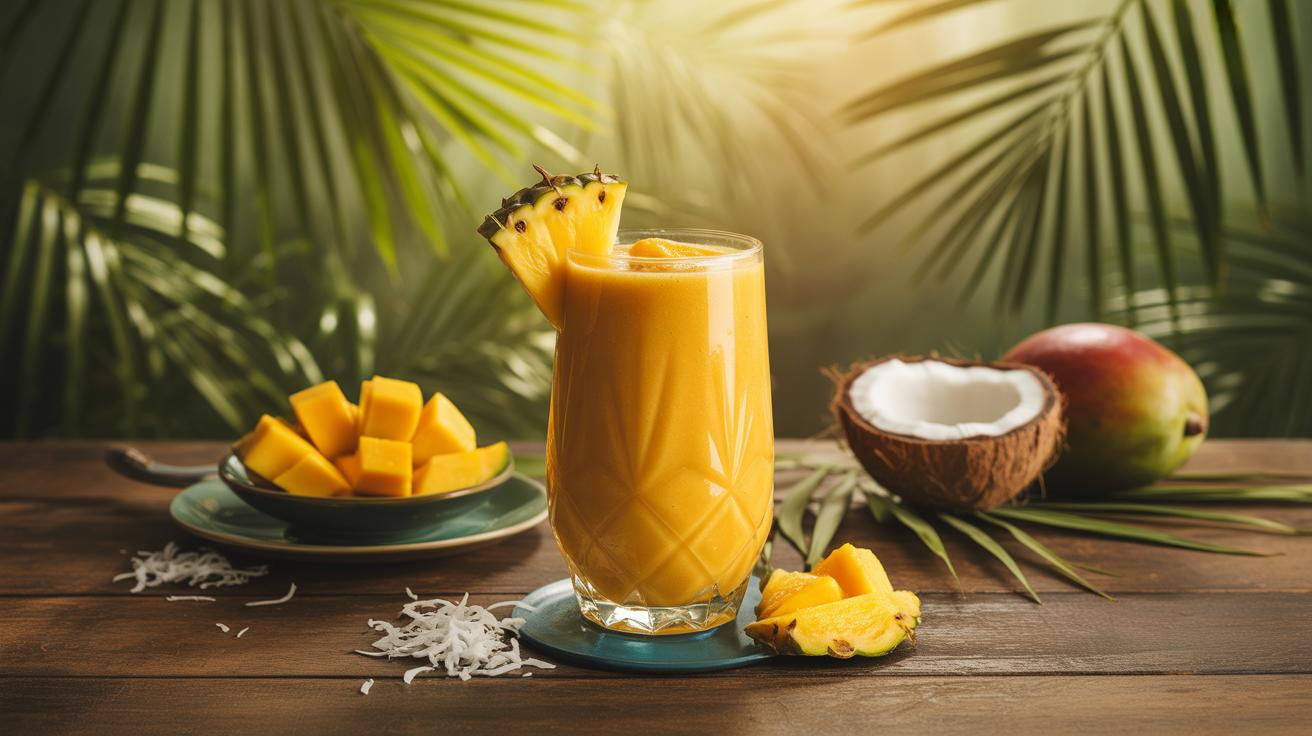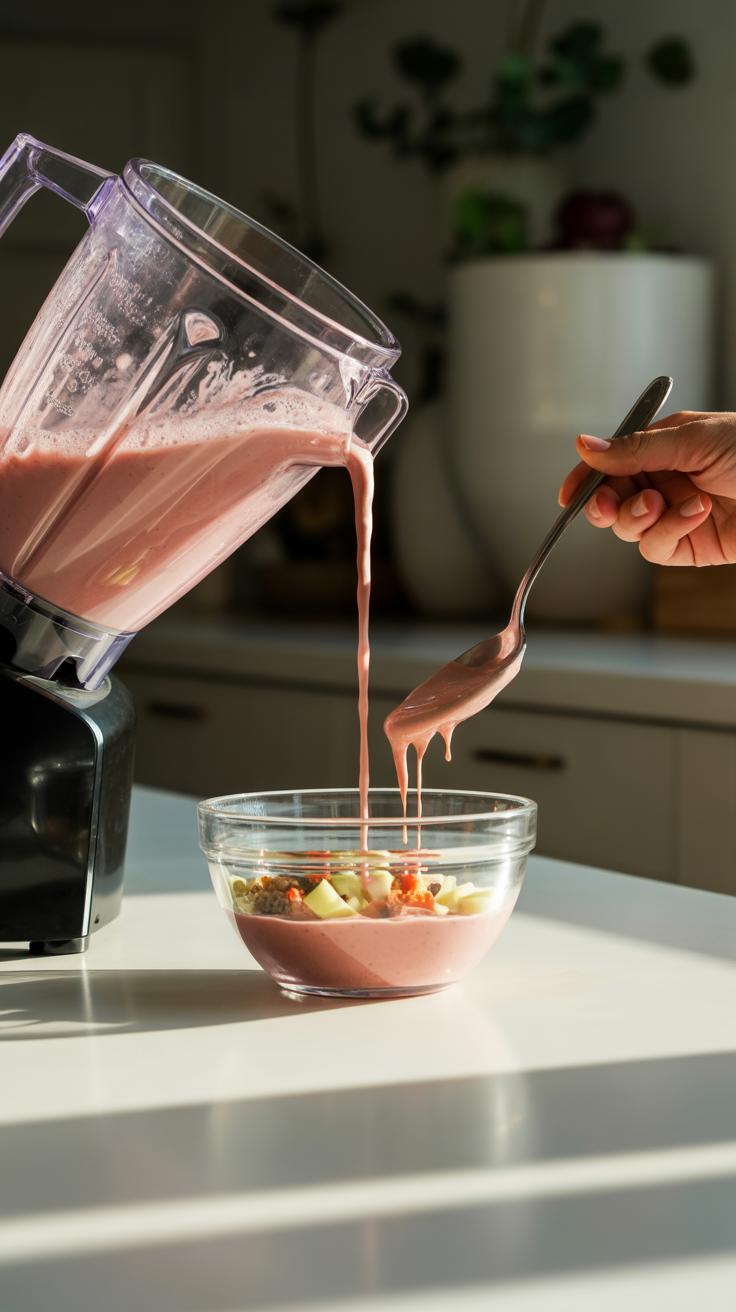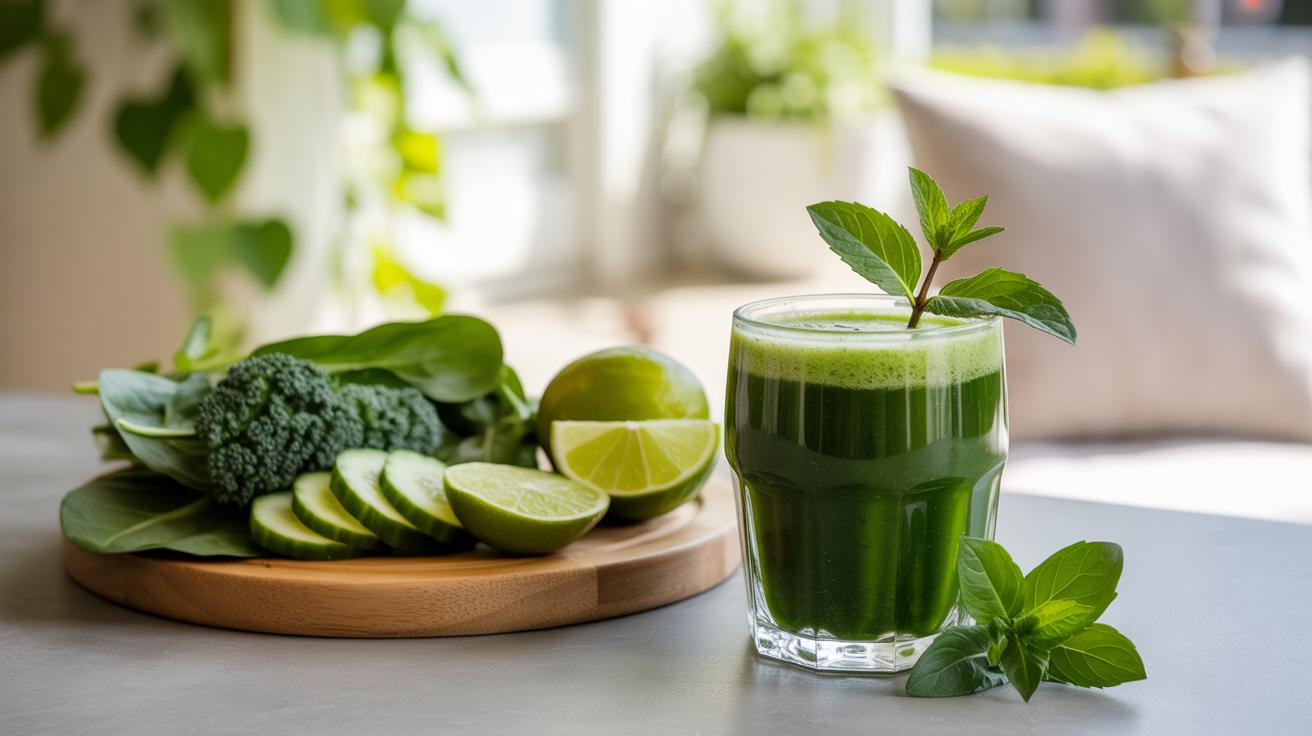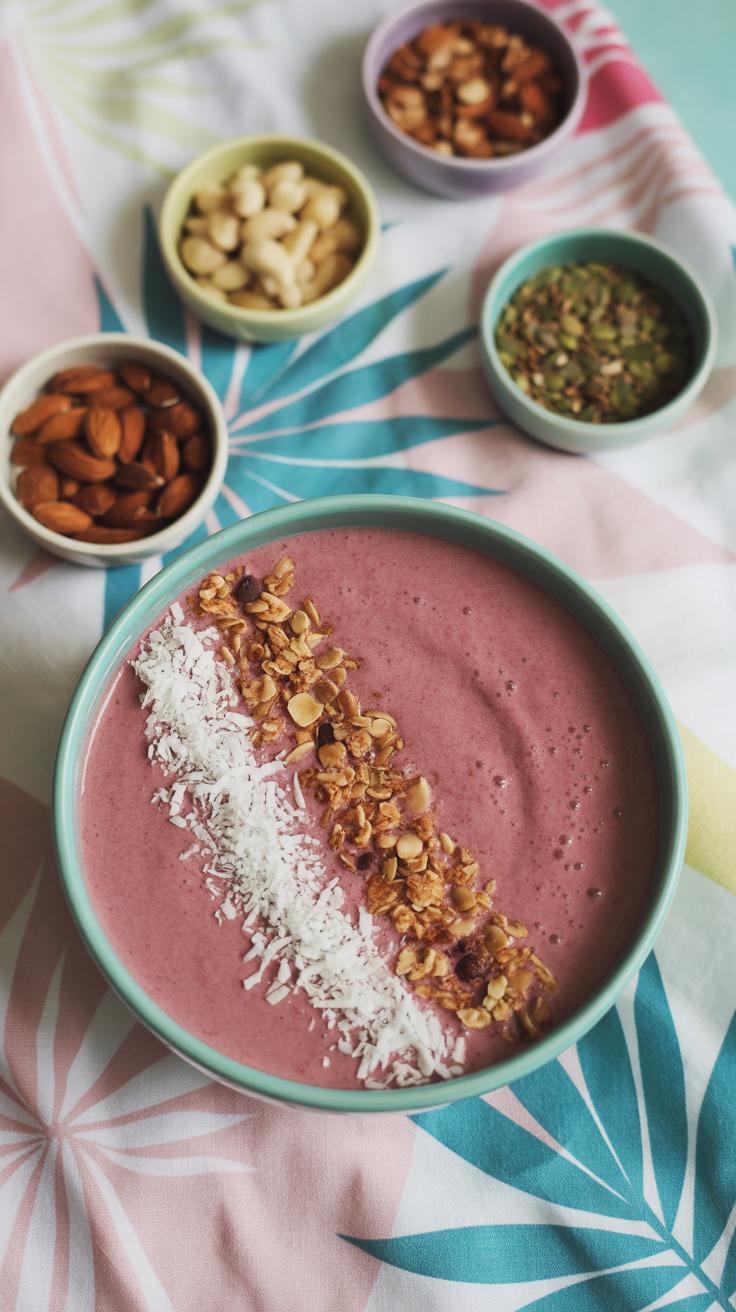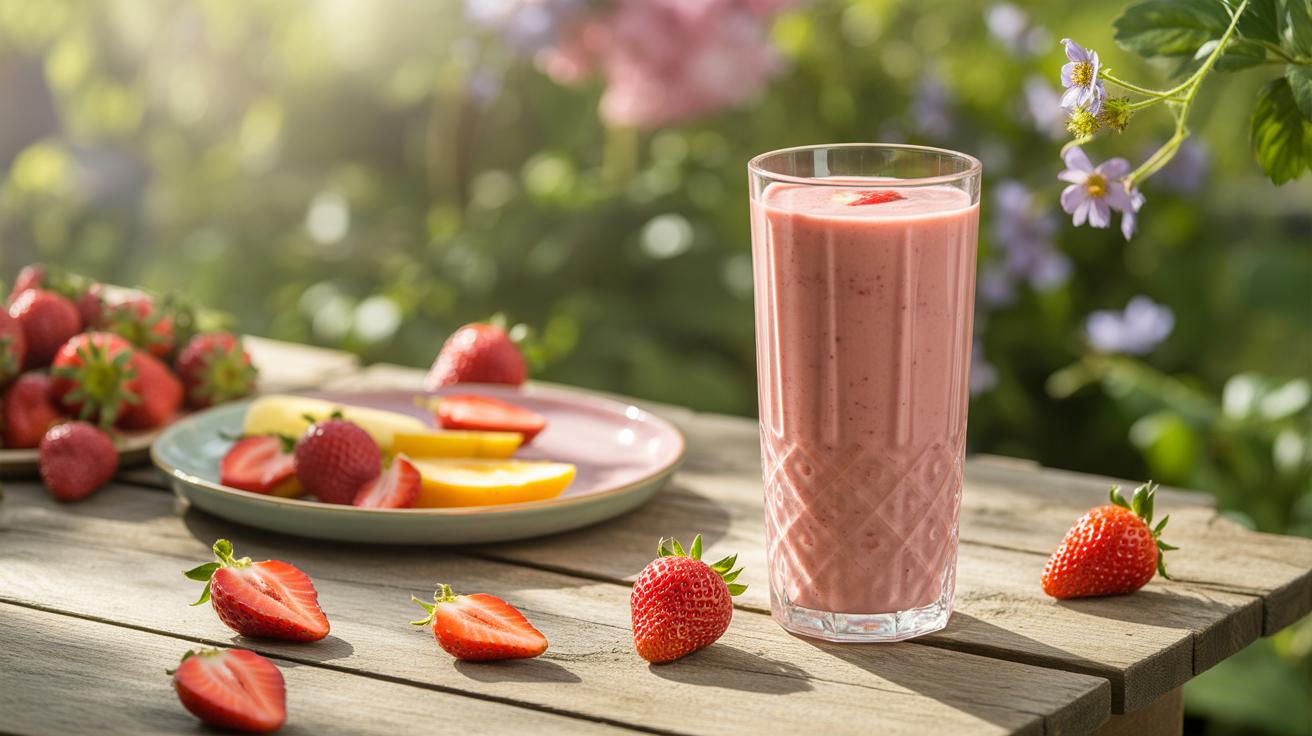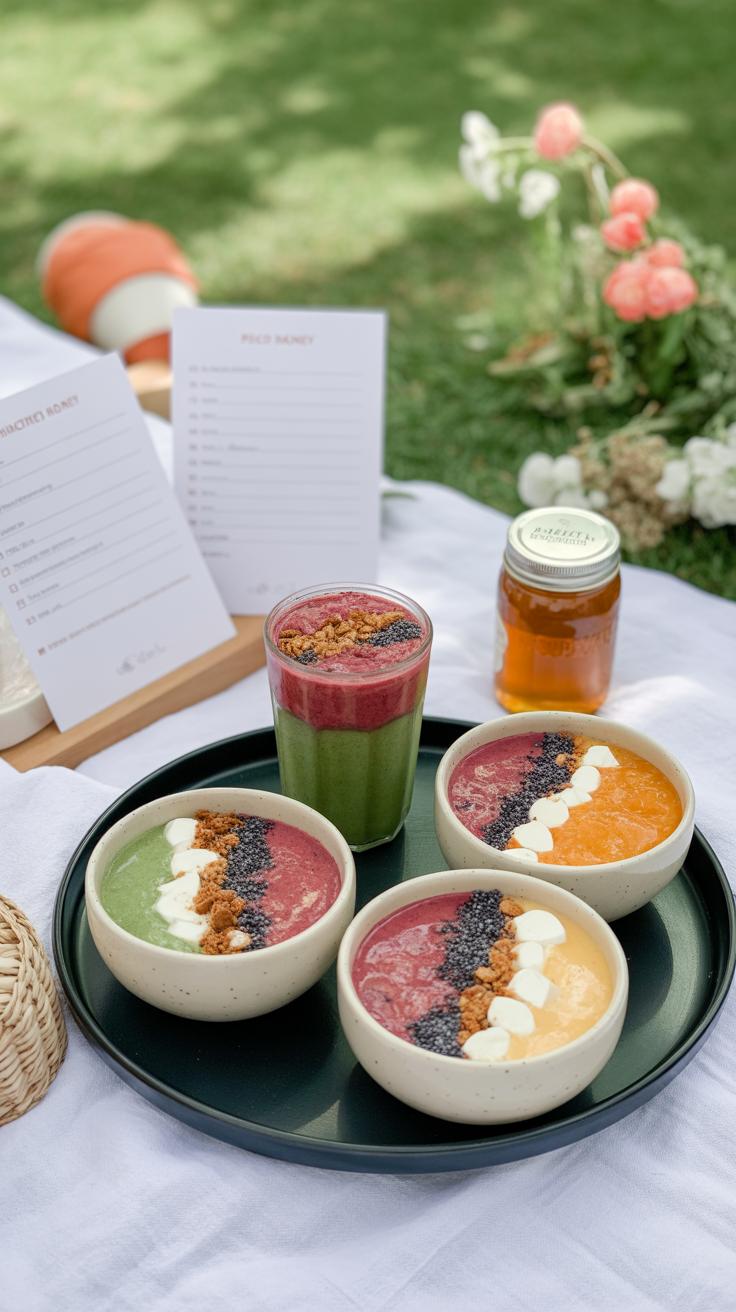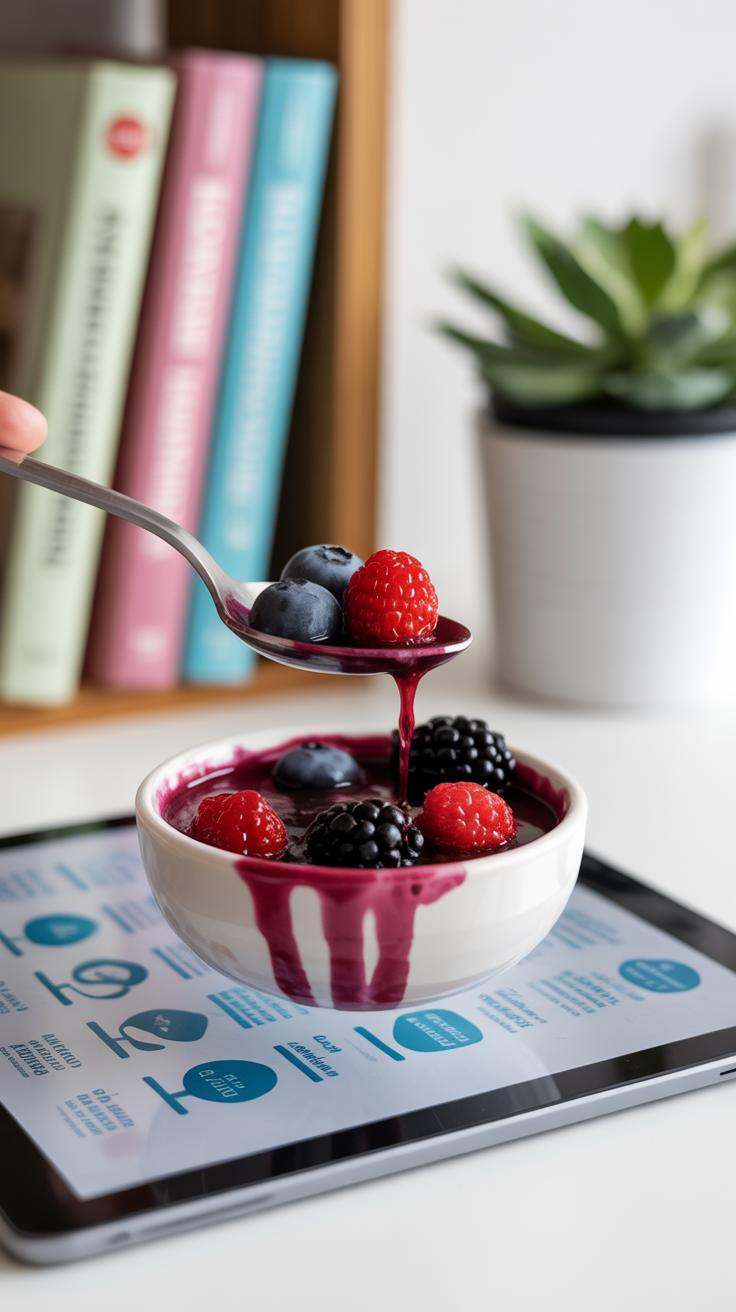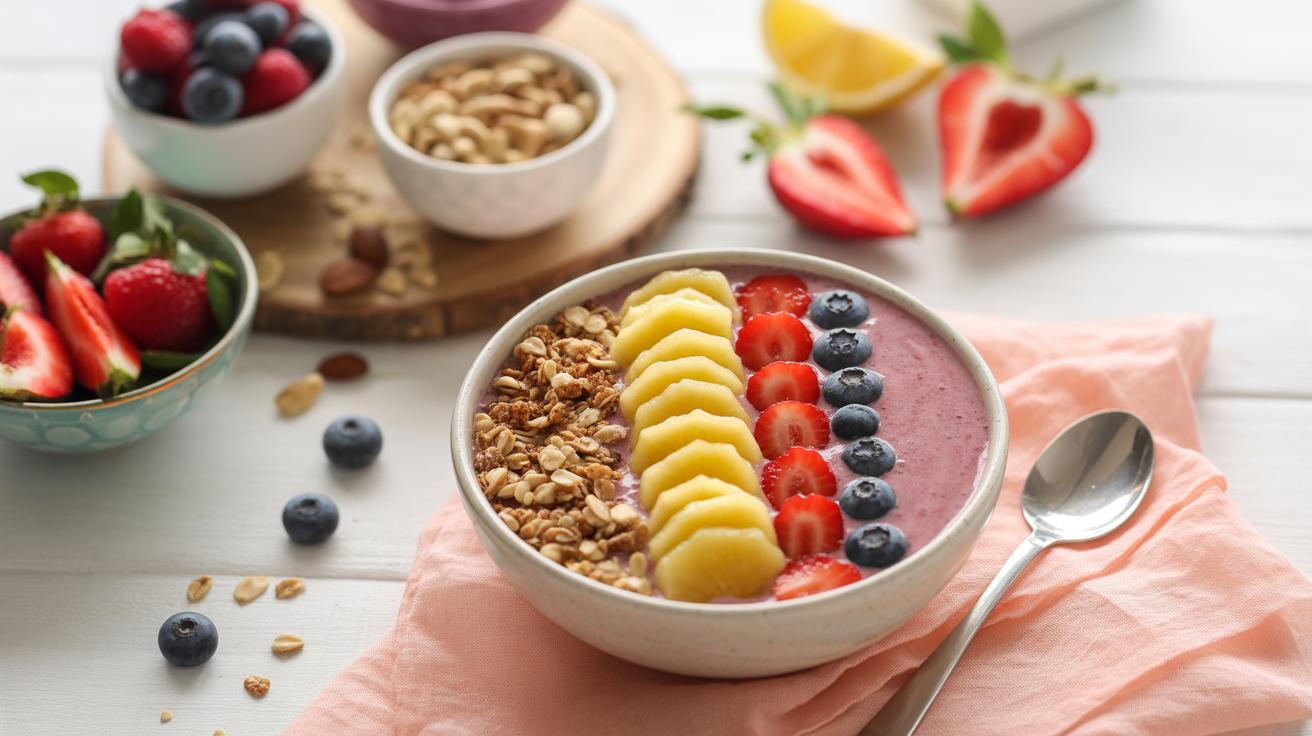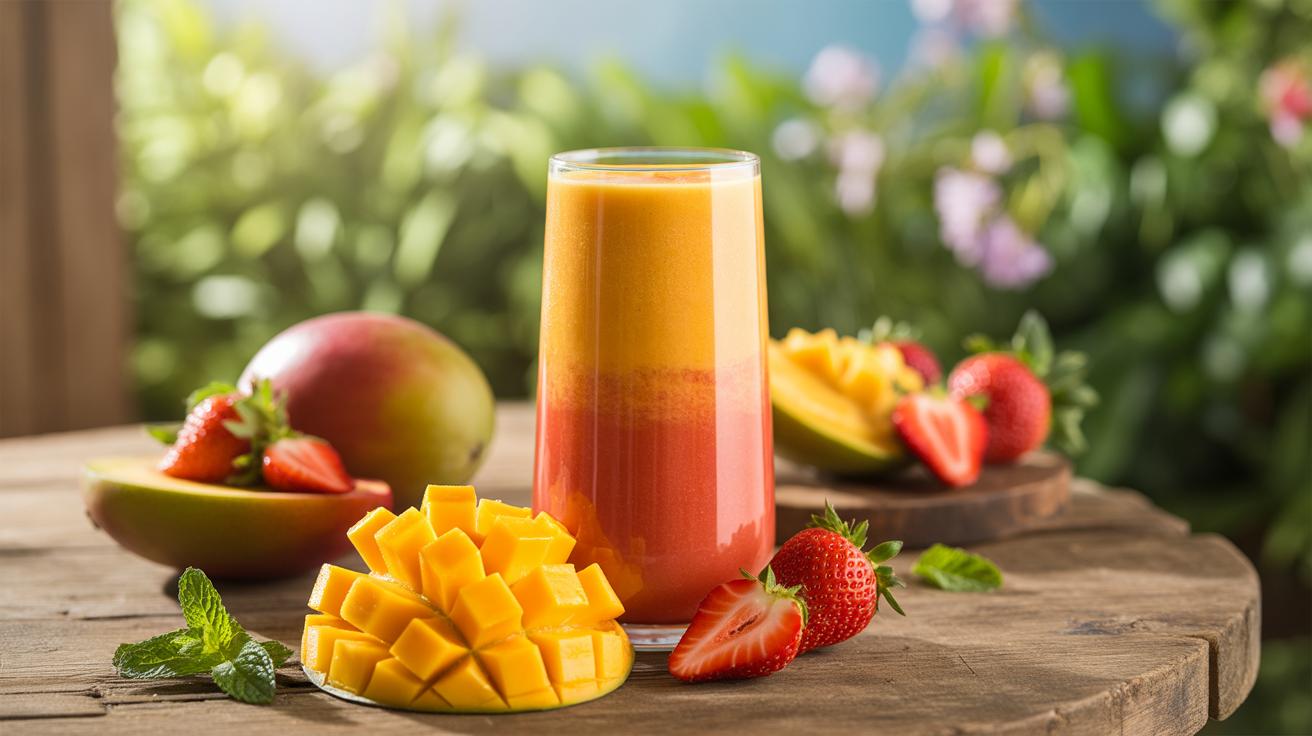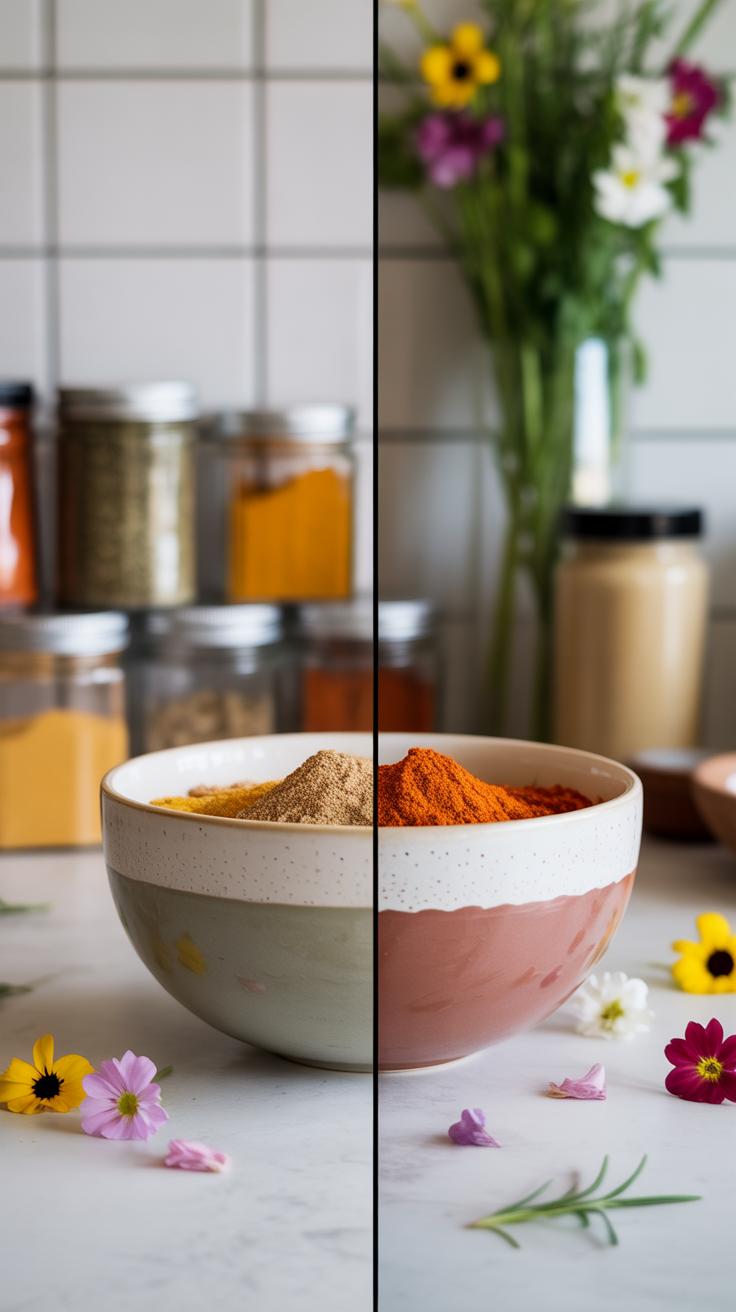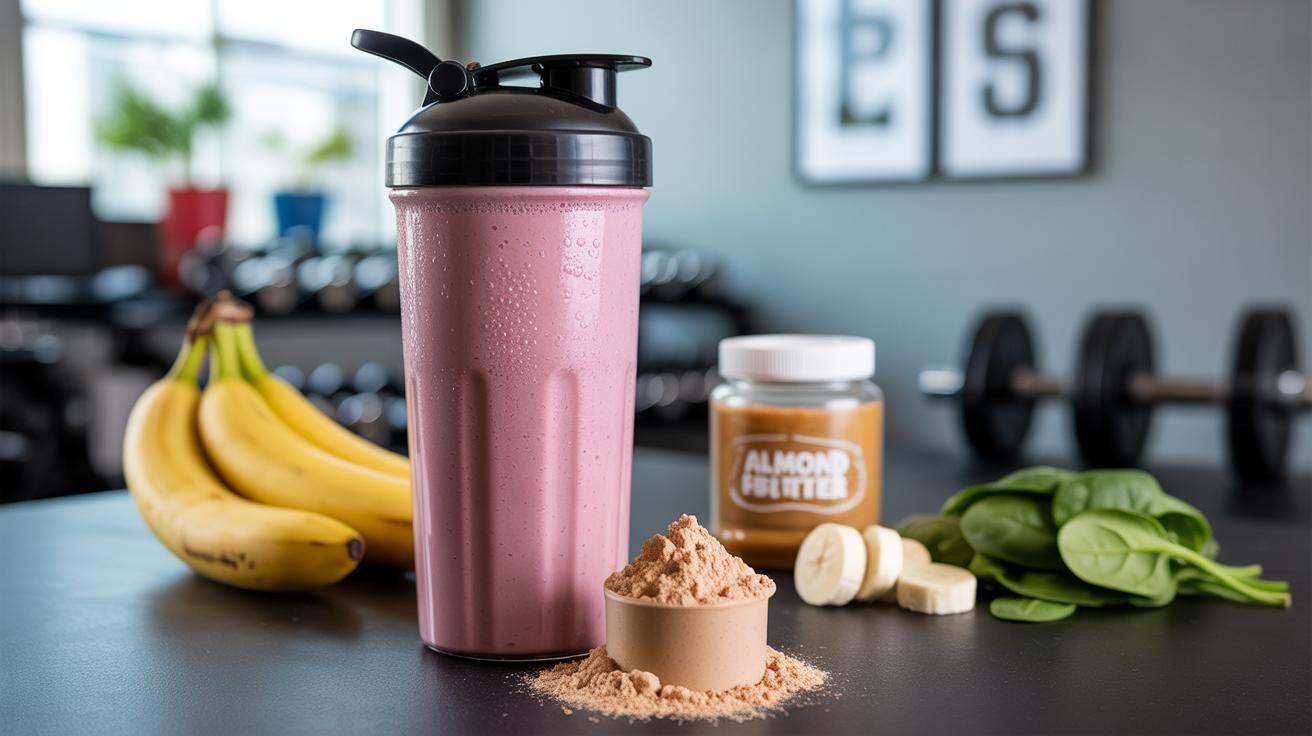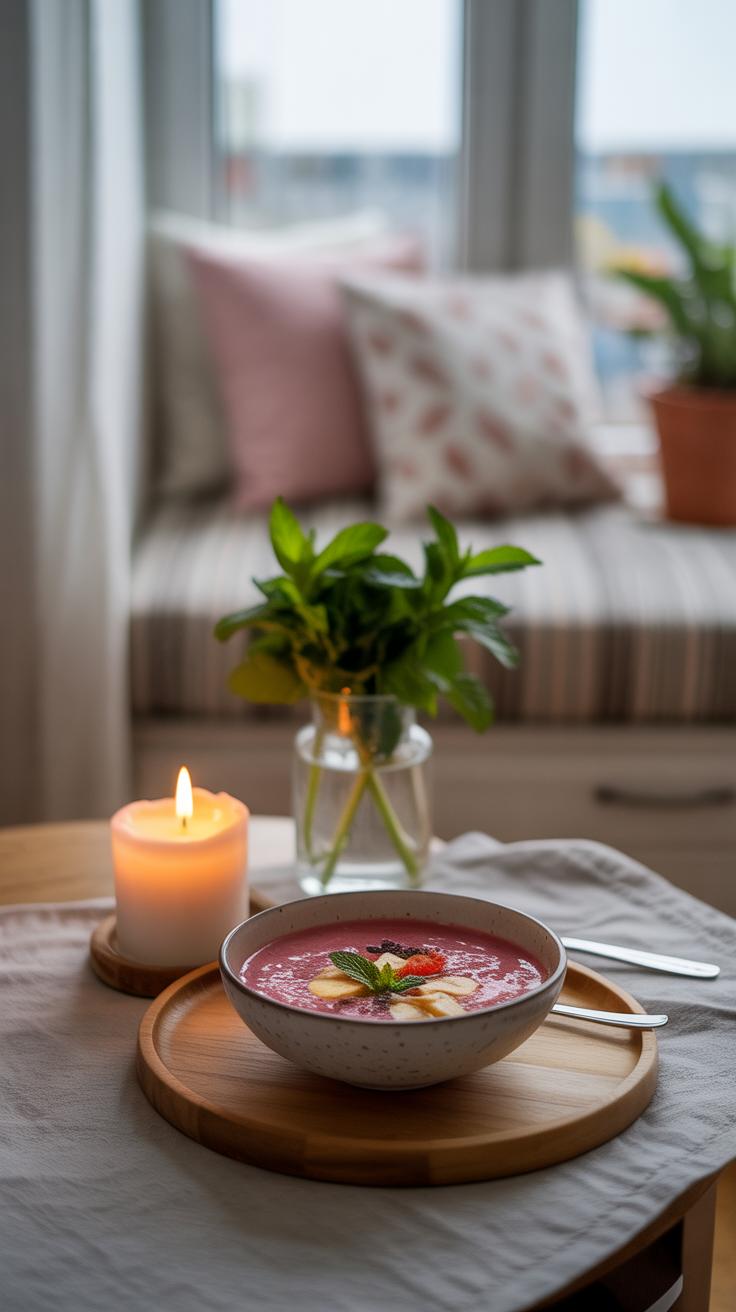Introduction
Smoothie bowls are a fun and healthy way to begin your morning. They combine the nutrition of a smoothie with the satisfaction of a bowl you can top creatively. By blending fruits, vegetables, and other ingredients into creamy bases, smoothie bowls offer energy and vitamins that help you face the day.
This article explores the topic Colorful Smoothie Bowls To Brighten Your Morning. It looks at the essential ingredients, preparation tips, and recipes you can try at home. You’ll also learn how to make your smoothie bowls look as good as they taste, turning breakfast into a lively, nutritious experience.
What is a Smoothie Bowl
The Basics of Smoothie Bowls
A smoothie bowl is basically what you get when a smoothie decides to take a more solid form. Unlike your usual smoothie—that you gulp down quickly from a cup—a smoothie bowl is thicker, more spoonable, and served in a bowl. The texture is often creamy or icy, dense enough to hold whatever toppings you want to add without them sinking immediately.
Typically, a smoothie bowl combines blended fruits, sometimes with yogurt or plant-based milk, and a handful of extras like seeds or nut butters. It’s almost like a cross between a thick shake and soft ice cream, but healthier. You eat it with a spoon rather than drink it, which feels like a small but notable difference.
How Smoothie Bowls are Different
So what really sets a smoothie bowl apart? For one, thickness. Smoothie bowls usually have less liquid than regular smoothies, making them dense enough to support toppings. That means you’ll often see things like granola, sliced fruits, nuts, or even edible flowers artfully arranged on top.
This presentation adds visual appeal—it’s not just about drinking nutrition but enjoying the look and texture too. In contrast, a regular smoothie focuses more on convenience, designed for quick drinking and on-the-go consumption.
Ingredients can overlap, but smoothie bowls often include frozen fruits or thicker ingredients like avocado to create that dense consistency. Plus, the serving style changes your interaction with the food, turning it into more of an experience rather than just a drink. You might find this slows you down in the morning, making breakfast feel a bit more intentional. Or at least that’s what some people say.
Choosing Your Ingredients
Picking the right ingredients for your smoothie bowl can feel a bit like an experiment, but that’s part of the fun. Fruits and vegetables not only add color but also bring unique nutrients and flavors. Think of berries—they’re popular for a reason. Blueberries and strawberries pack antioxidants that might help with inflammation and heart health. Mango and banana give natural sweetness and creaminess, making the texture smooth without extra sugar.
When you want greens, spinach and kale are common choices. They don’t overpower the taste much but boost your intake of vitamins A and K. Carrots can be a sneaky addition, adding beta-carotene and a subtle sweetness. Some days, I toss in beetroot powder or a few chunks of cooked sweet potato to deepen the color and add some earthiness.
Then there are the extras. Nuts like almonds or walnuts add crunch and healthy fats. Seeds—chia, flax, hemp—bring in omega-3s and fiber. Yogurt is a classic base that lends creaminess and probiotics, though you can pick non-dairy versions if that suits you better. Protein powders, whether plant-based or whey, can make your bowl more filling, especially if you’re using it as a post-workout boost. Sometimes, a sprinkle of cinnamon or a drop of vanilla extract shifts the whole flavor profile, making it feel less routine.
Choosing ingredients is personal. You might wonder which combinations last well or taste better together. Do you stick to what you know or try new things? If you ask me, mixing colors and textures keeps mornings interesting and your body happy.
How to Prepare a Smoothie Bowl
Making a smoothie bowl is simpler than you might think, but getting that perfect texture does take some care. Start by adding your frozen fruits and a splash of liquid—like plant milk or juice—into the blender. You want the mixture thick enough to hold a spoon upright but still smooth enough to scoop easily. Too watery, and it loses the bowl vibe; too thick, and your blender might struggle—or worse, your smoothie will be clumpy.
One trick I’ve found helpful is to pulse the blender a few times before blending continuously. It helps break down bigger chunks and avoids overheating the motor. You might need to stop and scrape down the sides once or twice, depending on your blender’s power. Don’t rush it; a well-blended bowl feels luxurious and creamy.
Blending Tips for Creamy Texture
For the creaminess part, frozen bananas or avocados work wonders. They add body without making the bowl icy or grainy—though, yes, sometimes avocado flavors can take over, so test your balance. Starting with less liquid often helps. You can always add a little more, but it’s harder to fix a runny mix. Thickening agents like oats or yogurt can also stabilize your blend, though that might change the taste and texture a bit—in some cases, that’s exactly what you want.
Best Tools for Smoothie Bowls
When it comes to gear, a high-speed blender usually makes the biggest difference. Models like Vitamix or Blendtec can pulverize frozen ingredients smoothly, but smaller personal blenders can also work if you adjust your technique a bit. Tools like spatulas become your best friends—they help scoop out every last bit without wasting your work. A wide bowl or deep dish helps as well, giving you space to decorate and enjoy. Sometimes I wonder if the right tools make it too easy, but then again, why not take the help?
Topping Your Smoothie Bowl
Choosing toppings for your smoothie bowl can turn an ordinary breakfast into something a bit more adventurous—and healthier, too. Fresh fruits are a classic choice, but there’s more room to play than you might think. Slices of kiwi or starfruit add a subtle tang and a bit of visual interest. Blueberries and raspberries contribute bursts of sharp sweetness, while banana slices offer creaminess that pairs well with almost any base.
Seeds are surprisingly versatile as toppings. Chia seeds sprinkle a little crunch plus omega-3 fats, while pumpkin and sunflower seeds introduce a nice nuttiness. I often reach for flaxseeds, even if their texture is subtler; they boost fiber without overpowering the flavor.
On the crunchier side, nuts and granola do more than just add texture—they add nutrients and subtle flavors too. Almonds, pecans, and walnuts bring in healthy fats and a satisfying bite. Granola, especially homemade or low-sugar versions, works well too. You might try coconut flakes or cacao nibs for something less common but still interesting. Sometimes I’m torn between just throwing on a bunch of toppings or keeping it simple. Do you find yourself over-topping? It can be a fun challenge figuring out the right balance.
Popular Smoothie Bowl Recipes
Starting with fruit-based smoothie bowls is usually the easiest and most straightforward way to jump in. You get a natural sweetness and vivid colors right away, which makes the bowls as appealing visually as they are tasty. For example, a simple strawberry-banana blend with a bit of Greek yogurt can easily become a creamy, satisfying base. Just blend frozen strawberries, one banana, and about half a cup of yogurt. It’s refreshing but also soothing—something that may catch you off guard if you expect something more intense.
Another favorite is the tropical mango-pineapple bowl. Blend frozen mango chunks with pineapple and a splash of coconut milk. It’s bright and a little tangy. Along those lines, blueberries combined with a touch of vanilla and almond milk create a subtly sweet and deep purple bowl, not too sweet, almost delicate. These bowls are good for mornings when you want something light but filling enough to keep you going.
Fruit-Based Smoothie Bowls
Think about mixing fruits beyond the usual combos. Try raspberry and orange, or peach with kiwi. The idea is to play with flavors and textures—some tartness, some creaminess. Here’s a recipe you might like:
- 1 cup frozen mixed berries (blueberries, raspberries, blackberries)
- 1/2 frozen banana
- 1/2 cup coconut water
- Spoon of honey or maple syrup if you like it sweeter
Blend these until thick but smooth. It’s simple but definitely not boring. You can top it with something crunchy or fresh like sliced kiwi or even toasted coconut flakes.
Green and Protein-Rich Bowls
Shifting gears, green smoothie bowls bring vegetables into the picture—sometimes they get ignored in breakfast, and that’s a shame. These bowls often balance fruit with leafy greens, avocado, and a protein source. Say you toss in spinach and cucumber with your fruit base. Then add protein powder, nut butter, or chia seeds. It feels hearty but not heavy. One of my personal favorites blends spinach, frozen banana, pea protein powder, and almond milk. The taste is mild but satisfying, and it keeps me full for a long stretch.
Another experiment you might try is combining kale with mango and a spoonful of Greek yogurt. It’s a curious blend but it works—it’s definitely different from what you’d expect but still pleasant. These bowls are a great choice if you want something more balanced, not just sweet but with substance that supports your morning energy.
Health Benefits of Smoothie Bowls
Smoothie bowls do more than just look appealing on your breakfast table. They pack a punch when it comes to nutrition, especially when made with fresh fruits and vegetables. You might be surprised at how these simple ingredients provide a wide range of essential vitamins and minerals that your body needs daily.
Vitamins and Minerals from Fresh Produce
Many fruits and veggies commonly found in smoothie bowls deliver important nutrients like vitamin C, potassium, folate, and fiber. For example:
- Spinach adds iron and magnesium, helping with energy production and muscle function.
- Berries offer antioxidants and vitamin C, supporting your immune system.
- Bananas supply potassium, which is key for heart health and maintaining blood pressure.
These ingredients often work together in ways that boost absorption—you might get more out of the combination than from each food alone. So, a vibrant bowl isn’t just for show. It’s genuinely nourishing.
Energy and Satiety Effects
If you’ve ever noticed yourself still feeling hungry an hour or two after breakfast, smoothie bowls may change that. Their mix of fiber, natural sugars, and sometimes protein keeps your blood sugar steadier, meaning a longer-lasting energy supply. I recall mornings when a smoothie bowl stuck with me longer than a plain cereal or toast.
Because they’re easy to digest yet filling, smoothie bowls support focus and prevent mid-morning crashes. You might find you’re less tempted by sugary snacks later. Yet, there’s also room to experiment; adding nuts or seeds can enhance satiety even further if needed.
Have you tried noticing how your energy shifts after a smoothie bowl breakfast versus something more traditional? It’s worth paying attention to, especially when mornings feel sluggish or rushed.
Customizing Your Smoothie Bowl
Everyone’s taste buds and dietary needs are different, and that’s what makes smoothie bowls fun to create. Maybe you like things a little tart, or perhaps you prefer your bowl on the sweeter side. You can adjust the flavors easily by playing with the base ingredients. If your smoothie feels flat, add a splash of citrus like lemon or lime to brighten it up—sometimes that little zing makes all the difference.
Sweetness is tricky. Too much can overpower, too little can feel bland. Try natural sweeteners like honey, maple syrup, or medjool dates. If you’re avoiding sugar, stevia or monk fruit can help without the calorie load. I find that starting with less sweetener and tasting as you go avoids the need to fix it later.
When it comes to special diets, smoothie bowls can adapt surprisingly well. For vegans, just skip dairy or honey—use plant-based milks and agave or date syrup instead. Gluten-free eaters can enjoy all fruit and nut bases without trouble. Keto dieters will want to focus on low-carb ingredients like avocado, coconut milk, and nuts while avoiding high-sugar fruits. Balancing the macros without losing flavor can be a bit of an experiment. Have you tried swapping banana for avocado in your bowl? It’s less sweet but creamy.
Ultimately, customizing your bowl is about what satisfies you that morning. Don’t overthink it; maybe today calls for something simple, tomorrow something richer. Listen to what your taste buds and body want—that’s probably the best guide.
Tips to Make Smoothie Bowls Enjoyable
Making smoothie bowls a regular part of your morning can feel like a bit of a hassle—even if you love them. The key is to keep things simple yet flexible enough to avoid boredom or overwhelm. One practical tip I’ve found useful is prepping ingredients in advance. You can chop fruits, portion nuts and seeds, or even freeze smoothie bases in single-serve bags so mornings don’t turn into a scramble.
When it comes to storage, think about what truly holds up well. Smoothie bowls don’t stay perfect very long once assembled, so it’s best to store bases separately in airtight containers and add crunchy toppings just before eating. You might find it better to blend fresh each day or keep a thicker frozen base ready to melt gently in the fridge overnight.
Presentation also nudges you toward enjoying your bowl more. Swirling colorful fruit or layering toppings in neat rows isn’t just for Instagram—it engages your appetite on a different level. You might try a sprinkle of toasted coconut here or a few edible flowers there. Little touches like using a bright ceramic bowl or a matching spoon make a surprising difference, turning a routine breakfast into something you look forward to.
Conclusions
Choosing colorful smoothie bowls for your morning meal brings both nutrition and enjoyment. By mixing the right ingredients, you get a meal rich in fruit, veggies, and proteins. This helps you stay full and energized as you start your day.
Creating your own smoothie bowls allows you to explore flavors and textures. It makes breakfast more exciting and beneficial for your health. Try incorporating smoothie bowls into your routine and notice the difference a bright, healthy start can make.

